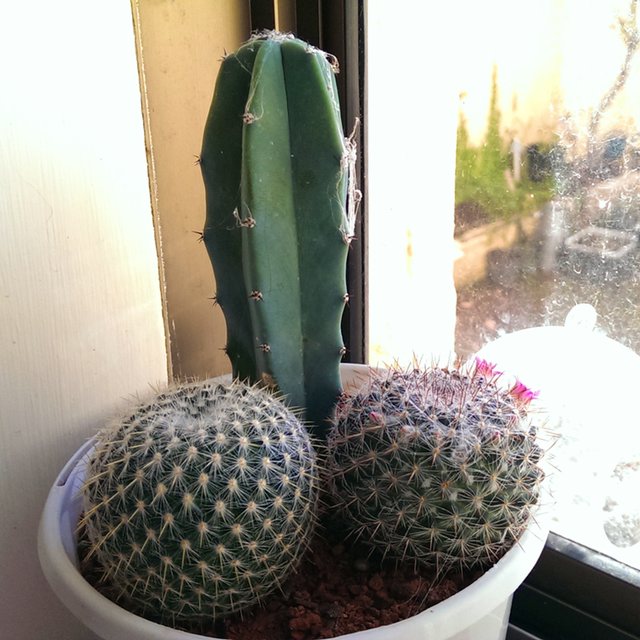Gardening
Notes on gardening, collected over the years.
When the mood strikes, I am as fanatic about my garden as an otaku when 残酷な天使のテーゼ comes on. Please enjoy this hodgepodge of gardening and plant growing notes collected on this site over the years.
Micro-vegetables
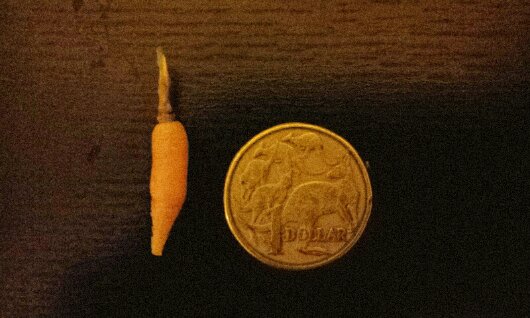
Micro-vegetables are not a thing unless you particularly enjoy not having enough for dinner.
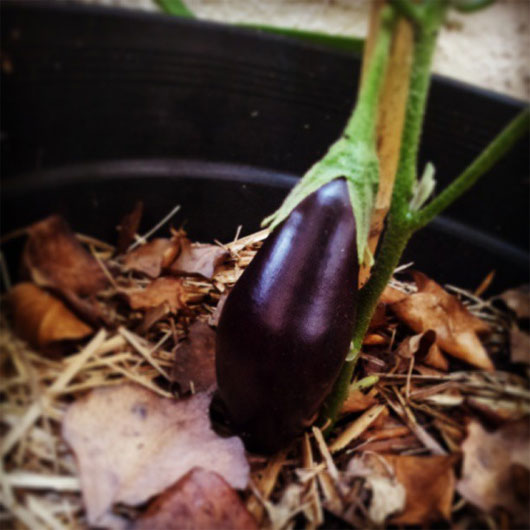
Still, if you insist on growing them, all you need is to make sure you're growing in a small space that doesn't get much sunlight.
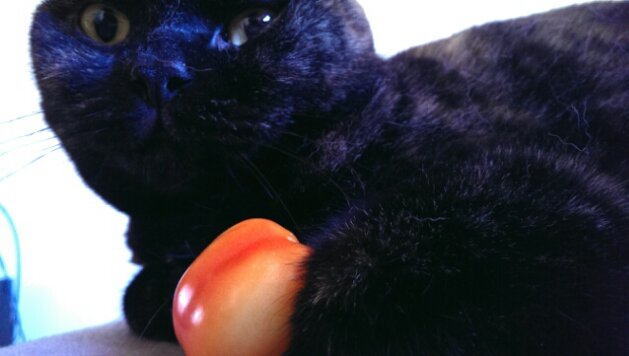
Tiny tomatoes are easy. Just get yourself a cherry tomato or grape tomato variety and they automatically grow small.
Just to prove I can grow normal-sized veggies too
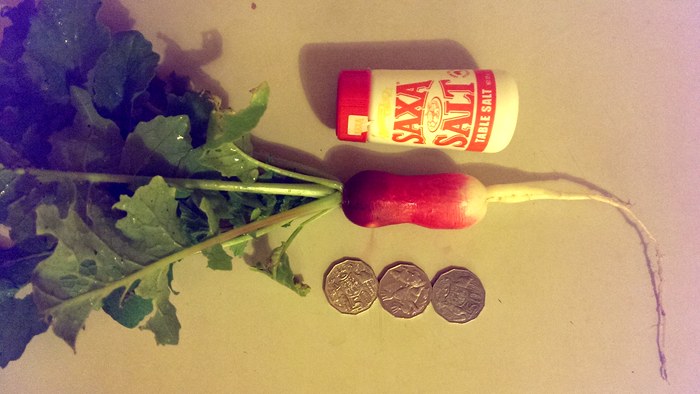
French Breakfast radishes are adorable, small but not tiny, and ideal at 3–4" long before they get pithy and hot.
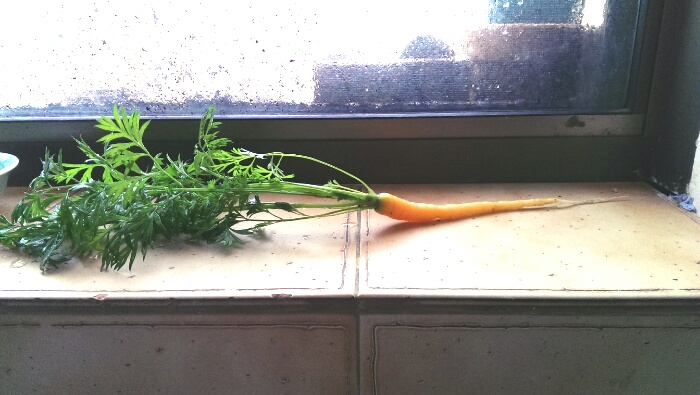
A slender baby carrot about the size of a pinky finger. Grow carrots in low-nutrient soil to make them slender and long. Rich soil will make the carrot grow knobbly and mutated because of all the extra nutrients the roots can reach for.
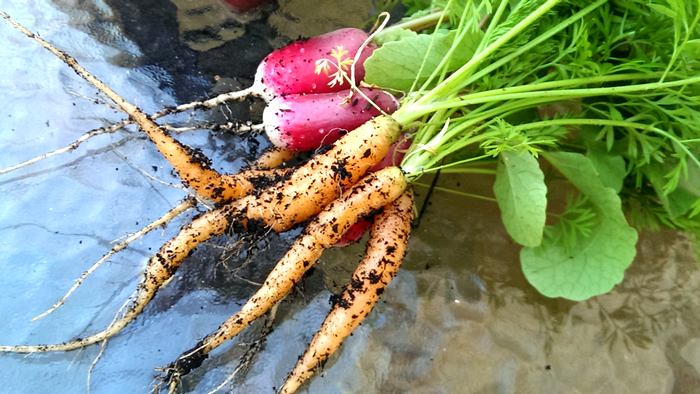
The full winter harvest of radishes and baby carrots.
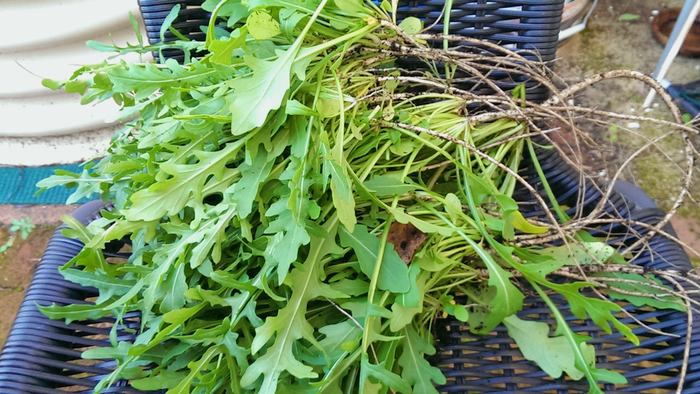
A whole salad's worth of rocket leaves. Rocket is also known as roquette, ruccola and arugula in some parts of the world.
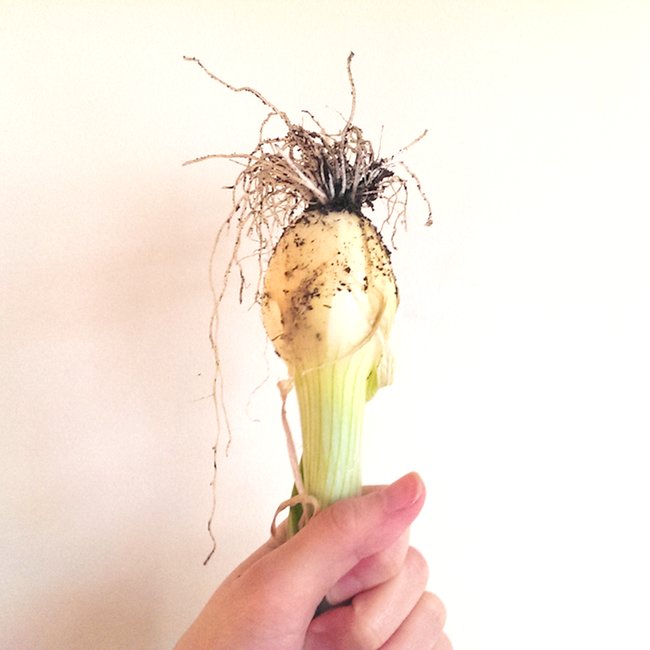
Brown onions harvested early are white. Fresh, homegrown onions have a lovely strong smell.
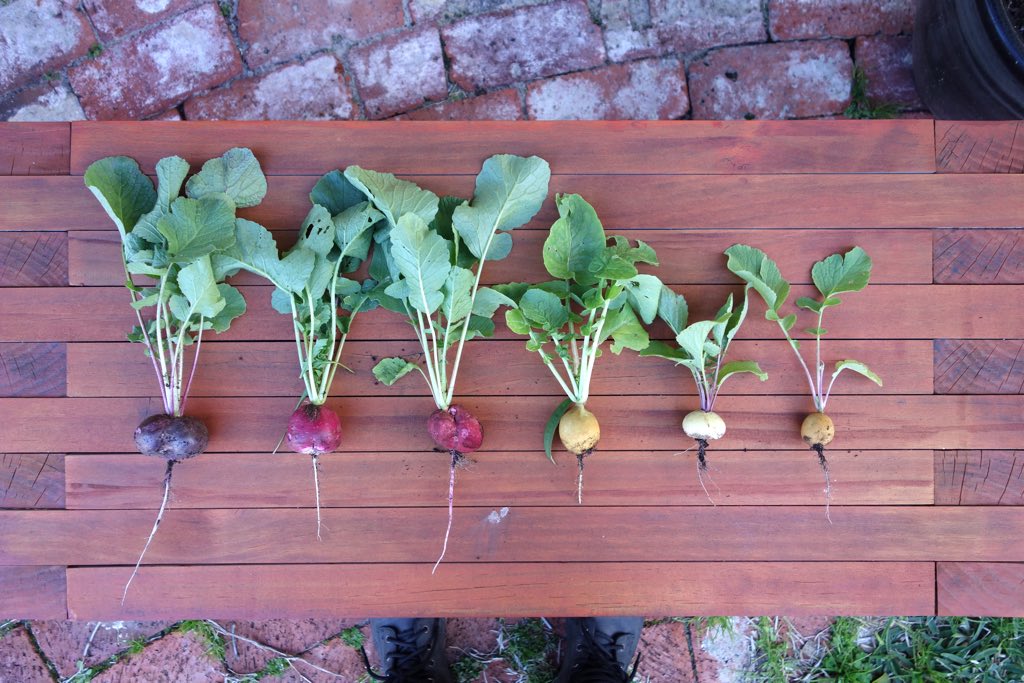
More radishes. They tasted sooooooo peppery and went straight into my pickle jar with coriander, garlic & chilli salt.
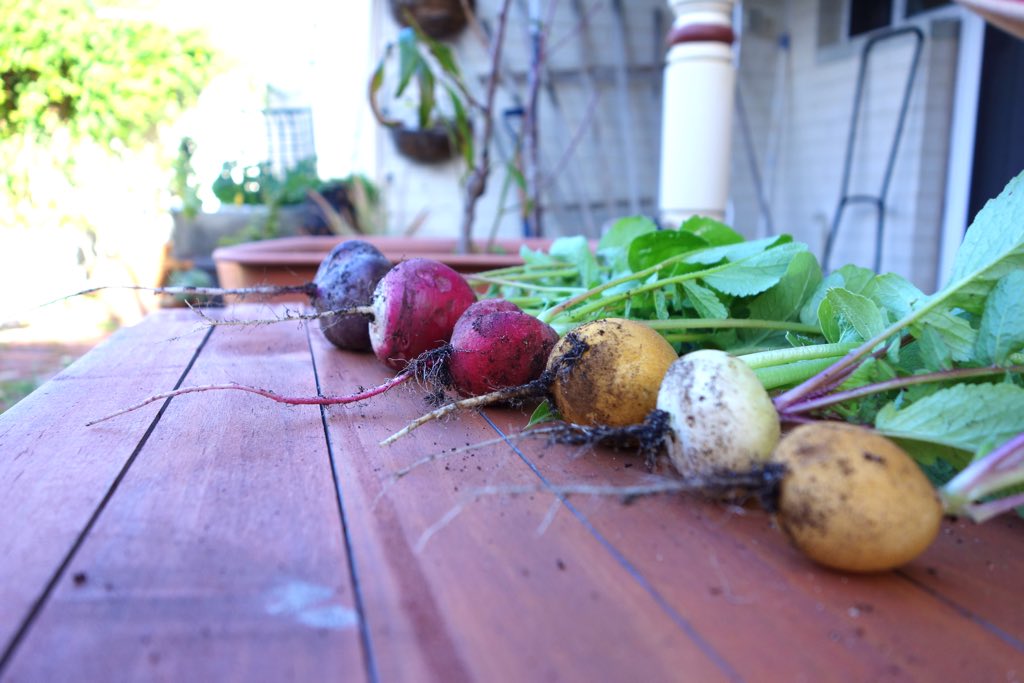
What I cannot do, however, is remove a tree stump
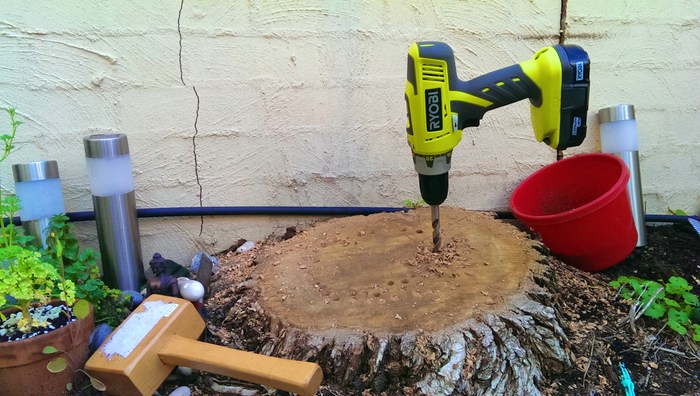
But I learned some valuable lessons: 1. Make sure the drill bit is spinning the right way otherwise you waste 10 minutes being a fool. 2. Make sure the batteries are fully charged. 3. Chiselling is tiresome and noisy and just as uninteresting as drilling.
Avoid karri & peat mulch
Because the moisture stays in the mulch rather than in the ground. Best to use composted clippings or straw.
Harvest lemongrass while the leaves are young
Because they taste better. As the leaves get older, they become woody. This isn't a bad thing for the plant, you just may as well eat leaves when they're tasty if you're going to eat them.
Use Seasol when watering to help plants establish roots
Seasol is a seaweed-based growth stimulant that, when added to newly installed plants, helps the roots to grow and establish in the garden. I've noticed permaculture types seem to prefer willow bark, maybe because you can DIY at home?
Improving sandy soil
A good soil for our purposes is a mix of substance (something for roots to grow into), water retention (clay), and organic matter (plants, poos, anything that decomposes into nutrients). For soil that's too sandy, add clay and organic matter to improve soil structure and increase water retention capabilities before planting anything that prefers "loam".
Pests and such
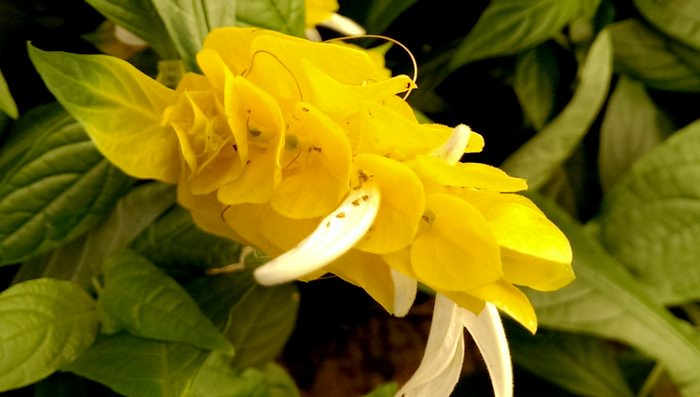
During my brief stint at a plant nursery for garden school, we received a set of flowers with aphids. A common but destructive bug, aphids suck the sap out of a plant, eventually killing it if the infestation is too extreme and left untreated. You can spot the bugs as little yellow, brown or green pinheads on leaves, stems and petals.
Treat aphids with insect oil like neem oil. Vegetable oil from the kitchen does the trick too. The oil asphyxiates the little bugs so they can't suck the life our of your plants.
At the nursery, they used an insecticide called Confidor, which unfortunately hurts bees too. The active substance in Confidor is called imidacloprid, a neurotoxin to insects that results in convulsions, paralysis and eventually death. It's not very toxic to mammals, but you wouldn't want to eat food covered in it. The chemical gets absorbed into plant xyelm (the bits that conduct water and nutrients) and stays present in the plant, thereby turning the whole plant into kind of an insect killer.
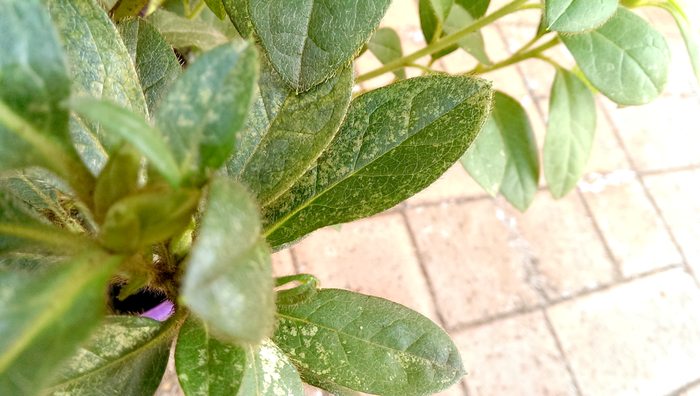
It's sad to see a plant afflicted by bad bugs. We found azalea lace bugs on some older plants. See the mottling on the leaves? That's from the bugs feasting on the underside. The mottling remains permanently on damaged leaves.
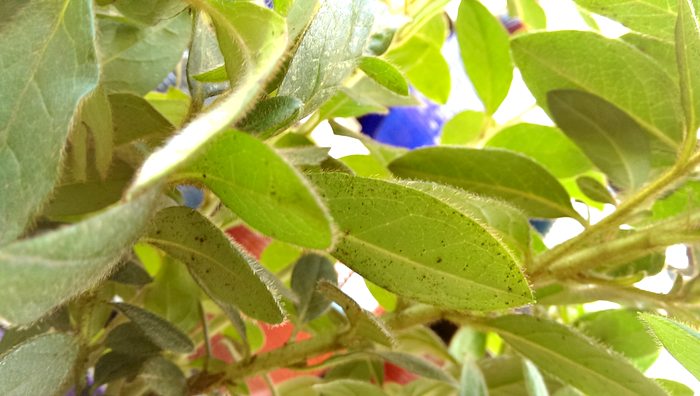
An alternative insect neurotoxin is pyrethrin, which breaks down more quickly than imidacloprid. I've been told just growing pyrethrum daisies can be enough to repel insect pests, though I'd love to hear from someone who's actually done it and knows.
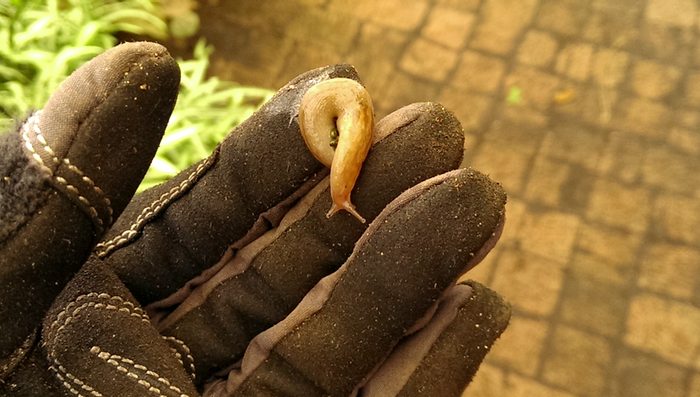
For garden slugs, coffee grounds are often recommended by this has never worked for me. Beer traps, however, have never let me down. Slugs and snails are lured by the delicious yeasty scent of beer, and indulge themselves to drowning. You do have to tip out the slug-filled gluggy old trap later, though.
A baby snail (nyaw~)
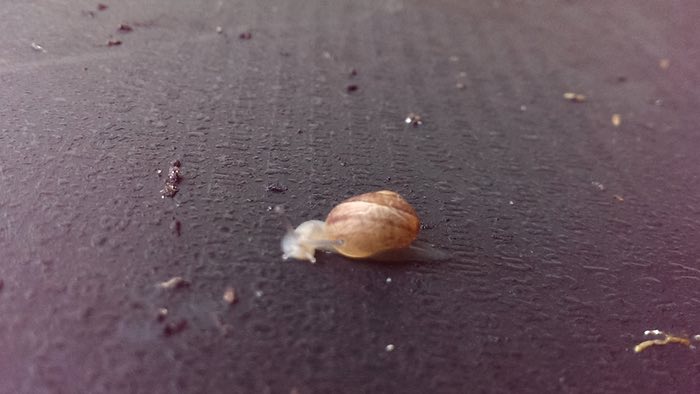
A baby snail, nyaw~
Maidenhair fern
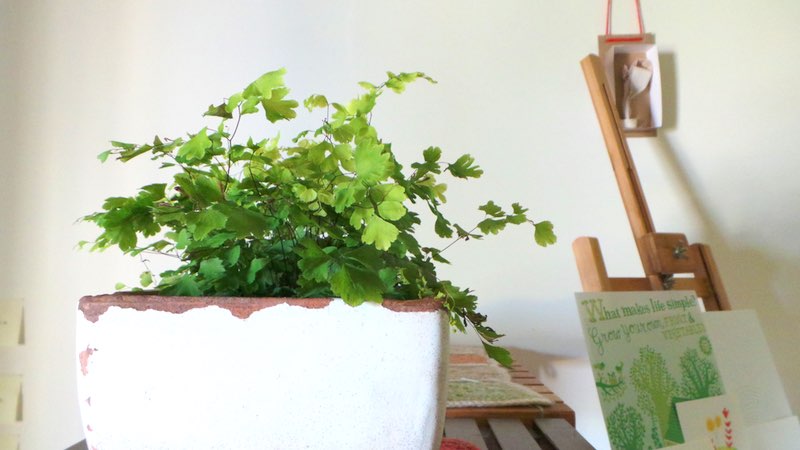
There are over 200 species of Maidenhair fern, each with a variety of cultivars. They like warmth and humidity. Don't put them in cold, draughty hallways.
Vinca (and making your chores suck less)
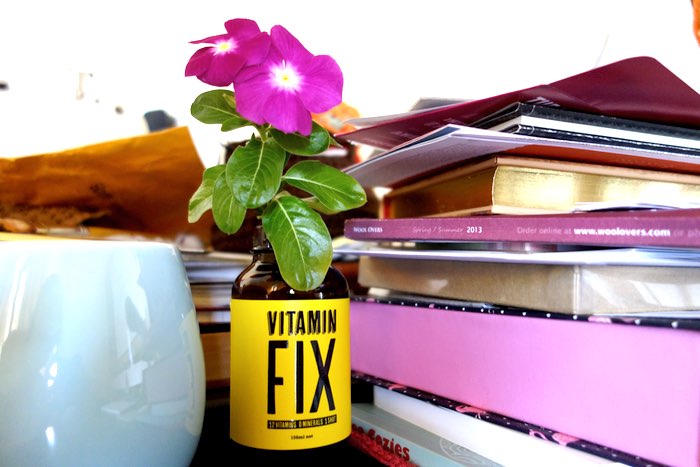
Common names: Vinca, Rose Periwinkle, Madagascar Periwinkle
Botannical name: Catharanthus roseus (fka. Vinca roseus)
Family: Apocynaceae
The vinca is an evergreen subshrub, growing upright, up to 35cm in height with up to 20cm spread. Leaves are glossy green, oval to oblong in shape, arranged in pairs opposite each other on the step. Flowers are hermaphroditic, and have five overlapping petals, ranging from white to dark pink. References: PanAmerican Seed, Wikipedia, Benara Nurseries
I set this one up after reading about how to make your chores suck less by putting something nice on display when you're done. The display piece serves as a reminder of your efforts and contributes to your feeling of satisfaction.
More floral inspiration
- In a vase on Monday - Autumnal Orange (Duver Diary)
- Desk Posy | Recipe 01 (Helarious)
- 10 Tips to Brighten Your Home With Flowers (House Nerd)
Camellia
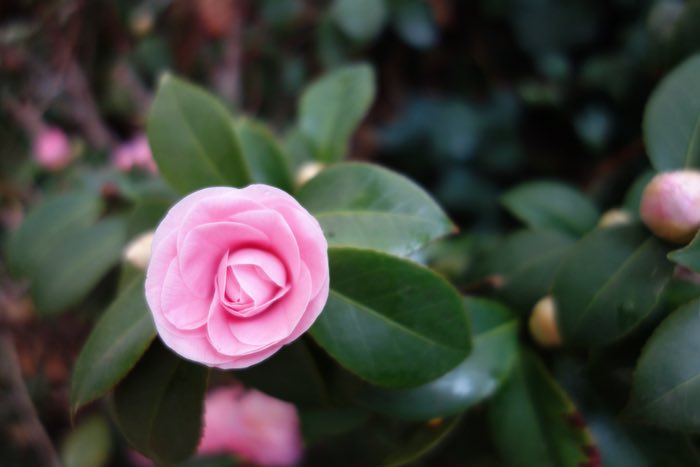
What I think is a Camellia japonica, c. 2015.
Sedum burrito
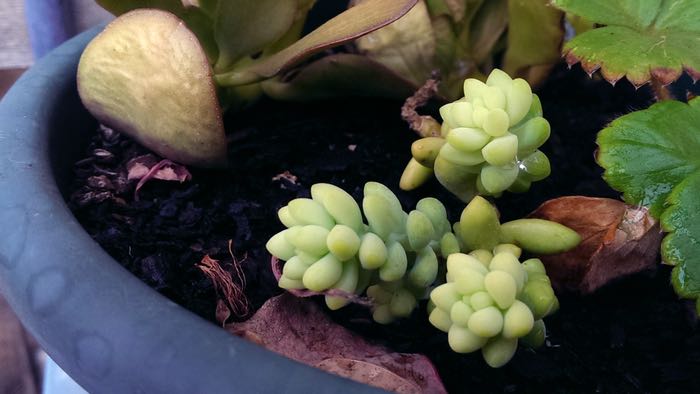
Once we found a 'Little Donkey' Sedum morganianum under a pile of detritus. It had fallen off a plant that didn't even come close to making it. Somehow, spending months ignored in the dank shade kept it alive. He only had one 'tail' when we found him, but become three-tailed after a couple of months. We kept him shadowy and moist during the hot weather.
No-dig garden bed
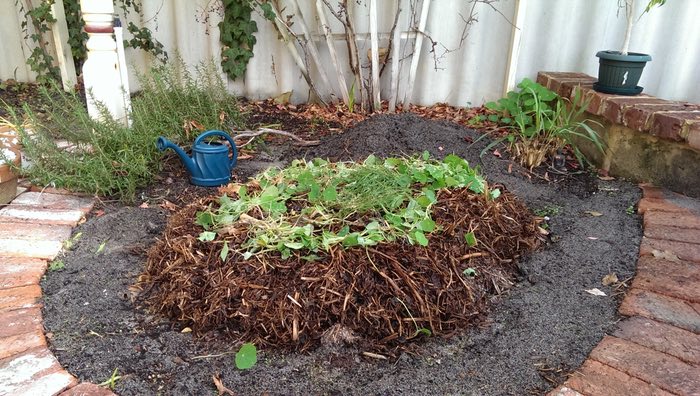
This is a 'no dig' bed. It's basically a compost pile you plant seeds and seedlings directly into. At the moment, it looks like a pile of crap. It is actually literally a pile of crap. Cow crap. Wet newspaper, pulled-up weeds and soggy mulch too.
Ps. Cactuses are cool
